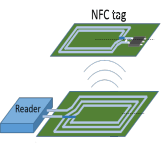天线增益与回波损耗有什么关系(急)
请问天线增益与天线结构中什么因素有关?天线增益与回波损耗有什么关系呢?
天线增益与天线结构没啥关系的.
有一定的关系,这个要看你是在设计什么样的天线的,天线的集合绕射和反射等都会给天线的增益有一定的损失的,个人理解
天线的增益和天线形式有关的,内置天线和环境有关如天线地的大小与地远近
有关还和支架的介电常数有关。回波损耗和匹配程度有关,匹配越好回波损耗
越大,即反射越小。
内置天线,,有时受环境的影响,,回损好了,增益不一定好的...现在看回损也是只是一个参考值而已...
sonnet 给出的天线增益和回波损耗的概念是这样的:
Directive Gain (dB)
Directive gain is defined as the radiation intensity from an antenna in a given direction divided by the uniform radiation intensity for an isotropic radiator with the same total radiation power.[2]
The far field viewer calculates the directive gain based on the total power radiated by your circuit. The far field viewer calculates the total power by using all the theta and phi points to integrate over the entire surface. Therefore, the more theta and phi points calculated, the more accurate the values provided for directive gain. A Figure of Merit (F.O.M.) appears in the Gain section of the legend when directive gain is selected to provide you with an idea of how accurate is the data (100% is perfect). If this figure is too low, try recalculating using more theta and phi data points. If this figure is too high, that is an indication that the problem is over calculated. i.e., angles are being analyzed twice. In this case, check for duplicate angels such as theta = 180 and theta = -180.
Relative to: You select a reference point from which the gain is calculated. For power gain, there are three choices: Isotropic, Arbitrary and Max.
Isotropic: Normalizes the data to a theoretical isotropic antenna in free space.
Arbitrary: Normalizes the data to an arbitrary value which you enter in the Reference Value text entry box.
Max: Normalizes the data by using the maximum value of radiation for the plot as the 0 dB point.
Reference Value: This value provides the reference point in dB for the normalization when using the Arbitrary setting.
Gain (dB)
The power gain is defined as the radiation intensity divided by the uniform radiation intensity that would exist if the total power supplied to the antenna were radiated isotropically[1].
Include Reflection: Select this checkbox to base the gain calculation on the total available power at the source rather than the total power delivered to the load.
Relative to: The reference points available for gain are the same as those described above for directive gain.
Reference Value: This value provides the reference point in dB for the normalization when using the Arbitrary setting.
Calculation of the far field antenna pattern: The Sonnet far field pattern viewer
calculates the far field pattern of the antenna from the analyzed current density and
displays the antenna gain in 2D Cartesian or polar format. You can normalize the
pattern to show the directive gain or the antenna gain.
If you choose to display the directive gain (also known as directivity), the radiated
power is normalized to an ideal, isotropic radiator that radiates the same total power.
The output is the far field pattern of the antenna. Please note that any antenna
losses will not be taken into account.
If you choose to display the gain (also known as power gain), the radiated power is
normalized to the input power. All dielectric and metallic losses are taken into
account. The gain is therefore always smaller than the directive gain.
If you want to take antenna losses into account, you have to choose “gain” as
normalization (Graph > Normalization... > Gain). An additional option is to take
mismatch losses into account as well. This means that any mismatch (input
reflection) will reduce the antenna gain. The following two screenshots below show
the same theta-cut plots as above, but now for the normalization “gain”. It can clearly
be seen that the antenna gain is much smaller than the directive gain, due to the
losses.
看看最后三个"if you",大概的意思就应该清楚了.
定义上讲,增益是假设匹配良好的前提的,也就是认为回波损耗很小。考虑上回波损耗之后,就跟实际测量的情况一样了,回波损耗大,测到的增益肯定偏低。
显然有关系吧!
有关系,有很大关系。
唉唉,书上都讲了啊
回去好好看书去
但有些时候在HFSS仿真中 天线增益挺好 驻波大 怎么解释呢
什么时候?举例说明
恩,是这样说的
天线的增益和它的口径面大小及口径辐射效率相关。这个你只要查下相关的公式就知道了...
回波损耗就是指的驻波,驻波越小说明辐射出去的能量越大(假设无损耗)。回波损耗小,则优。
回波损耗和天线增益没有必然的联系,但还是有点影响...
学习了一下
天线增益与结构肯定有关系。比如你设计一个八木天线。阵子多一点的话。增益有可能就高。但是也不是无止境的高。回波损耗主要和你设计天线时是否匹配有关系。如果你设计的天线与馈电不能很好的匹配,回波损耗就大。个人理解仅供参考
回答人挺多啊
学习学习
相关文章:
- 天线增益的问题(05-08)
- 关于天线增益的一点不解(05-08)
- 天线增益G的公式推导(05-08)
- 水平极化同轴缝隙天线增益调试方法(05-08)
- 天线增益与回波损耗有身没关系(急)(05-08)
- 开阔场天线增益测量问题(05-08)








